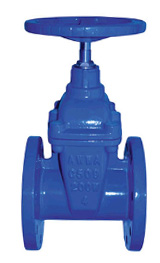9 月 . 01, 2024 19:50 Back to list
Industrial Swing Check Valve - Reliable Backflow Prevention
Understanding the Industrial Swing Check Valve
In the realm of fluid control systems, the swing check valve plays a crucial role in maintaining the efficiency and safety of operations. Primarily used in industrial applications, these valves allow for the unidirectional flow of liquids and gases while preventing reverse flow, which can lead to operational inefficiencies and potential damage to equipment.
What is a Swing Check Valve?
A swing check valve operates using a hinged disc that swings open and closed depending on the flow direction. When fluid flows in the intended direction, the disc opens, allowing flow to pass through. Conversely, when the flow attempts to reverse, the force of the fluid pushes the disc closed, effectively sealing the valve and preventing backflow. This simple yet effective mechanism is one of the reasons for the widespread use of swing check valves in various industrial applications.
Applications of Swing Check Valves
Swing check valves are commonly found in a variety of industries, including water treatment plants, oil and gas, power generation, and chemical processing. Their primary function is to protect equipment such as pumps and compressors from damage caused by backflow. In water systems, for instance, these valves help maintain pressure and prevent contamination by stopping water from flowing back into the supply line.
In the oil and gas industry, swing check valves are critical for safeguarding pipelines. They ensure that the flow of crude oil, natural gas, or refined products remains stable, thus preventing leaks and enhancing safety. Similarly, in power generation, these valves play a vital role in steam and water systems, supporting efficient energy production while mitigating risks associated with backflow.
Advantages of Swing Check Valves
industrial swing check valve

One of the key advantages of swing check valves is their low-pressure drop characteristic. Compared to other types of check valves, such as lift check valves, swing check valves typically offer a smoother flow path. This not only enhances system efficiency but also contributes to lower operational costs.
Another benefit is their simplicity of design. Swing check valves are generally easier to install and maintain, making them a favorable choice for plant operators. Their robust construction ensures durability, and the absence of complex mechanisms reduces the likelihood of failure, making them a reliable choice in demanding environments.
Considerations When Choosing a Swing Check Valve
When selecting a swing check valve for industrial applications, several factors must be considered. The valve’s size, material, and pressure rating must match the specific requirements of the system it will be integrated into. Additionally, the installation orientation plays a crucial role; swing check valves are typically installed in a horizontal position but can function in vertical orientations under certain conditions.
Furthermore, it is essential to consider the type of fluid being handled, as corrosive substances might require specific materials like stainless steel or specialized coatings to ensure longevity and performance.
Conclusion
In conclusion, industrial swing check valves are essential components in fluid control systems, providing reliable operation and protection against backflow. Their simple design, low-pressure drop, and durability make them a preferred choice across various industries. By understanding their functionality and applications, operators can make informed decisions that enhance the efficiency and safety of their systems, ensuring reliable fluid management in today’s demanding industrial landscape.
Share
-
Understanding the Differences Between Wafer Type Butterfly Valve and Lugged Butterfly ValveNewsOct.25,2024
-
The Efficiency of Wafer Type Butterfly Valve and Lugged Butterfly ValveNewsOct.25,2024
-
The Ultimate Guide to Industrial Swing Check Valve: Performance, Installation, and MaintenanceNewsOct.25,2024
-
Superior Performance with Industrial Swing Check Valve: The Essential Valve for Any SystemNewsOct.25,2024
-
Industrial Swing Check Valve: The Ideal Solution for Flow ControlNewsOct.25,2024
-
You Need to Know About Industrial Swing Check Valve: Functionality, Scope, and PerformanceNewsOct.25,2024